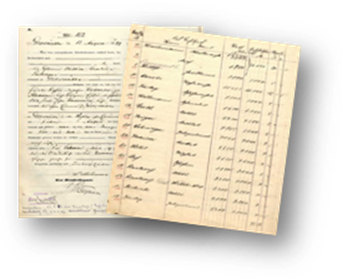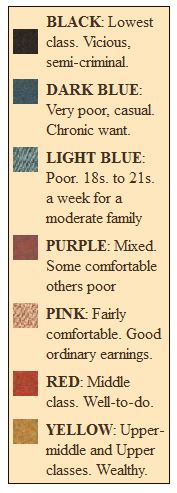We Dig These Gems: New Genealogy Records Online
Every Friday, we blog about new genealogy records online. Might these collections include your ancestors? Today: British apprenticeships, Cleveland Jewish newspapers, Costa Rica civil registrations, Croatia church books, North Dakota state censuses, and Pennsylvania Civil War rosters.
BRITISH APPRENTICE RECORDS. FindMyPast subscribers can now Britain, Country Apprentices, 1710-1808. These nationwide registers for apprenticeships “recorded the tax paid for each indenture for an apprentice. The average apprenticeship was seven years.” Records may include an ancestor’s parent(s), his/her master and the profession chosen.
CLEVELAND OH JEWISH NEWSPAPERS. The Cleveland Jewish News Archives has added digitized newspapers that preceded the Cleveland Jewish News (already online) back to 1893. Among the papers included are these weeklies: The Hebrew Observer (1889-1899), The Jewish Independent (1906-1964 weekly), The Jewish Review (1893-1899) and The Jewish Review and Observer (1899-1964). Subscription required.
COSTA RICA CIVIL REGISTRATION. More than a million indexed records have been added to the free browsable digital images of Costa Rice Civil Registration, 1860-1975 at FamilySearch. This includes “Births, marriages, deaths, legitimizations and indexes created by civil registration offices in Costa Rica.”
CROATIA CHURCH BOOKS. Nearly 3 million indexed records have been added to FamilySearch’s free collection of Croatia Church Books, 1516-1994. Browsable images are already online. According to the collection description, “Records of births and baptisms, marriages, deaths and burials peformed by priests in Croatia. Includes vital records of Jews. These records were acquired from the Croatian State Archive. Baptisms through 1900 can be searched.”
NORTH DAKOTA CENSUSES. Over 350,000 indexed records each for North Dakota censuses of 1915 and 1925 are now searchable for free at FamilySearch. Included in these records are names, titles, relations to heads of household, hold, race, residence and family number.
PENNSYLVANIA CIVIL WAR MUSTERS. Ancestry subscribers can now search Pennsylvania Civil War Muster Rolls, 1860-1869. Says Ancestry, “This collection includes muster out rolls, arranged by regiment and thereunder by company. They list the soldier’s name, age, rank, unit, regiment and company; the date, place, and person who mustered him in; the period of enlistment; and the name of the commanding officer. Other details can include where the soldier enlisted, whether he was drafted or was paid as a substitute, pay earned, money owed to the U.S. for clothing or missing equipment, promotions, capture by the enemy, illnesses, and bounty paid and owed. At the end of the musters, transfers, deaths, and deserters were often listed, typically with details about the circumstances (e.g., where and when transferred; cause, date, and location of deaths; dates and places of desertion, etc.).”
Here’s a tip: Always read the descriptions for online collections you are searching. The descriptions generally tell you the source of the records; which records are included/missing; what genealogical data you may find in them and tips for searching the dataset. Some websites also suggest related databases. This tip comes to you courtesy of The Genealogist’s Google Toolbox by Lisa Louise Cooke, freshly updated and completely revised for 2015!








